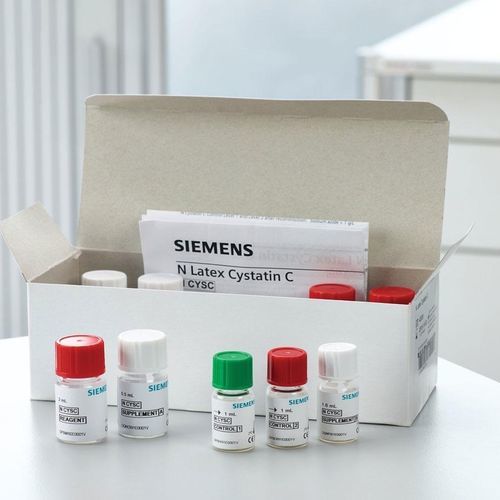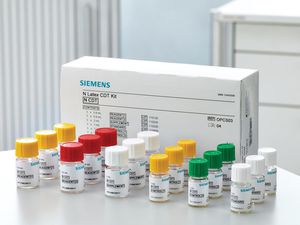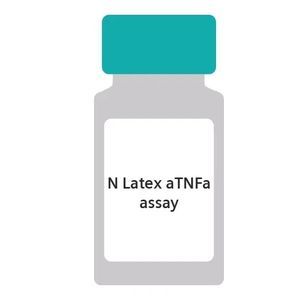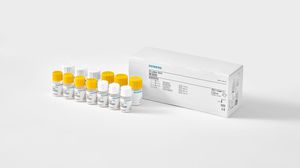
- Laboratory
- Laboratory medicine
- Kidney disease test kit
- Siemens Healthineers - Laboratory Diagnostics
Kidney disease assay kit N Latexcystatin Ccreatinineserum
Add to favorites
Compare this product
Characteristics
- Applications
- for kidney disease
- Tested parameter
- cystatin C, creatinine
- Sample type
- serum, plasma, laboratory
- Result display time
6 min
- Sample volume
0.03 ml
(0.00101 US fl oz)
Description
Renal disease often progresses undetected, because kidney impairment does not cause pain. This is why chronic kidney disease is not diagnosed until patients show symptoms of an advanced stage of the disease. In the early stages of disease, laboratory testing is the most efficient and sensitive way to detect reduction in renal function.1
Cystatin C shows increased sensitivity to renal dysfunction compared to serum creatinine, especially in the early stage of kidney disease characterized by a mild reduction in glomerular filtration rate.
The N Latex Cystatin C Assay:
Is suitable for both serum and plasma specimens
Has low imprecision (total CV <5%)
Runs on the Atellica® NEPH 630 System2, BN™ II System, and BN ProSpec® System
Features & Benefits
Cystatin C is a nonglycated, low-molecular-weight (13 kDa) protein that is synthesized by all nucleated cells. It is produced at a constant rate regulated by a housekeeping gene.3 Cystatin C is freely filtered by the glomerulus, and there is no tubular secretion or any extrarenal elimination. In addition, cystatin C is not affected by muscle mass, diet, gender, or inflammation.
The relevance of determining cystatin C for diagnosis in CKD is included in the international KDIGO (Kidney Disease Improving Global Outcomes) guidelines.
No tubular secretion; sensitive in the creatinine-blind range3
Higher sensitivity in early disease
Independent of age, sex, and muscle mass3
Constant relationship between cystatin C and glomerular filtration rate (GFR) at 1 year of age and older
Single reference range: 0.62–1.11 mg/L in children and adults ranging in age from 1 to 78 years
Sensitive detection of declining GFR with aging
Catalogs
No catalogs are available for this product.
See all of Siemens Healthineers - Laboratory Diagnostics‘s catalogsOther Siemens Healthineers - Laboratory Diagnostics products
Plasma Proteins
Related Searches
- Siemens Diagnostics test kit
- Solution reagent kit
- Blood assay kit
- Serum assay kit
- Immunoassay assay kit
- Plasma assay kit
- Protein reagent kit
- Diagnostic reagent kit
- Laboratory reagent kit
- Clinical assay kit
- Clinical chemistry reagent
- Quality control reagent kit
- Siemens Diagnostics biochemistry analyzer
- Laboratory software
- Clinical reagent kit
- Virus reagent kit
- Siemens Diagnostics automatic biochemistry analyzer
- Test strip
- Benchtop clinical chemistry analyzer
- Laboratory detection kit
*Prices are pre-tax. They exclude delivery charges and customs duties and do not include additional charges for installation or activation options. Prices are indicative only and may vary by country, with changes to the cost of raw materials and exchange rates.










